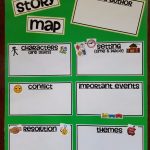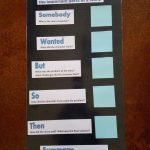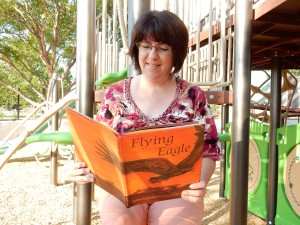I love getting into the nitty gritty or meat of a book. Now I can explore new routines to use to prompt further thinking and use for assessment! In chapter 4, you are introduced to 7 new routines. At our last school, we were already using See, Think, Wonder in response to a visual in math and science as a tool to understand where students are in their understanding or to prompt discussion. Also, Think, Puzzle, Explore just sounds like an alternative to a KWHL chart. Zoom In is similar to See, Think, Wonder but focuses on a small piece of an image, then yielding to a larger view. I think this would be handy as a lesson to show students the value of close reading and reviewing material. It also gives a different perspective to how you see something. Chalk Talk is similar to how we opened up new units in our International Baccalaureate program: Ideas? Connections? Questions? These were all valid tools, yet I didn’t feel like it was anything truly new from what I’ve been practicing.
So let’s get to the 3 which I found the most interesting:
3-2-1 Bridge
Here is a quick method to stimulate background knowledge, promote thought, then assess connections/growth. The idea is that a student provides 3 words, 2 questions, and 1 metaphor/simile in response to a topic, then repeats the same activity after learning more about the concept. If time, I might would ask students to write a brief explanation and draw a diagram to show their thinking. At a minimum, I would ask for because to be added to each of the 3 words to deepen the activity and provide a better understanding of what each student is thinking. Otherwise, you’re just playing word association – I can do this without really knowing what I’m saying. Because is such a powerful word in education. I’m always about students writing down their thoughts to practice explaining ideas. If you’ve ever taught, then you know a student saying the sky is blue because of the angle of the light coming through the atmosphere sounds like he/she has some understanding. However, when you ask for an explanation you might get something quirky such as, “because the aliens from other planets are shooting rays of light from different places, which planet is shooting rays decides which shades of blue you see or if it’s red,” which means Suzy actually doesn’t understand at all and has access to alien movies at home. Ah, small moments such as these bring joy to teaching, almost as well as that aha moment by little Suzy. I’d like to play with this routine several times to see what types of assessment I can gain.
Compass Points
In second grade, we teach interpreting information on a map including orientation and legends. How fun to tie in the compass points with a method of sharing our ideas. In this routine, E = Excitement/advantages W = worries/concerns/problems (which leads to action needed), N = needs, and S = stance/opinion. I see this as a different structure for a concept wheel. I can imagine using this when researching landforms, considering how people settle according to their environment or considering the concept of saving money. I think I will tie in the Carousel Kagan structure with this routine for a unit allowing for movement with activation, the revisit the same activity for assessment.
The Explanation Game
This routine allows for a student to look closely at one piece of a larger concept and consider its function or role. The steps are Name it, Explain it, Give reasons, and give alternate reasons/possibilities. I like that it is asking for reasons, then asks a student to delve more deeply into possible alternatives. I will need to really work on modeling this to promote thought beyond the superficial, but it allows for a natural differentiation with infinite growth. This is an excellent match with open ended projects in science and social studies. In a way, I think Number Talks provide this type of thinking in math naturally. Students are describing their observations/steps, explaining them, then discussing alternative perspectives. I’d like to try this with the program SeeSaw, allowing students to record their thoughts individually or in pairs, then discuss as a class.
Overall, I’m always looking for engaging ways to get my students thinking about their learning and better understand what they know. I’m excited to implement these ideas in my next job. I can’t wait to be back into the classroom to try these ideas.
